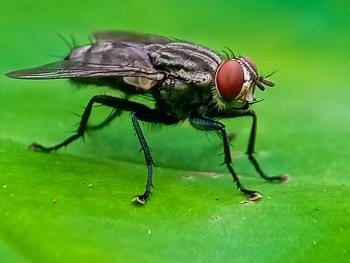
Oh no! A new tick species we have to worry about in the U.S.
The Asian longhorned tick is relatively small, but hardy, causing trouble for pets, wildlife, livestock and humans.
The Asian honghorned tick | Photo courtesy of James Gathany/CDC
The Asian longhorned tick (Haemaphysalis longicornis) is native to East Asia and is a significant invasive species in New Zealand, Australia, some Pacific islands and, now, the United States.1 In 2017, the Asian longhorned tick was first confirmed in the U.S. in New Jersey, but was later determined through archived tick samples to have been in the country since 2010 or earlier. It has since been found in Arkansas, Virginia, West Virginia, New York, Pennsylvania and Maryland. The introduction of ticks into the U.S. is uncommon, and the exact route of entry remains unknown, but possibilities include entering the country on livestock, humans or pets.2
What are they like?
An adult Asian longhorned tick is dark brown with no distinct markings and is approximately pea-sized when fully engorged.2,3 Compared to other ticks, unfed adult Asian longhorned ticks are fairly small, measuring approximately 3 to 4 mm.3 Haemaphysalis species ticks are inornate, have festoons and do not have eyes; the second segment of the palpi extends past the rectangular basis capitulum.4 Invasive Asian longhorned tick populations are parthenogenetic, but parthenogenetic and bisexual populations have been found in their native range.1 With the ability to reproduce without males, an entire population can be created by a single female Asian longhorned tick.2
This tick species is able to survive in cold and warm climates, increasing its ability to expand its range to the rest of the U.S.1 It's also important to note that there are two native Haemaphysalis species of ticks in the U.S., including H. leporispalustris found on rabbits, rodents and ground-dwelling birds and H. chordeilis found on ground-dwelling birds. There are subtle morphological differences between ticks in this genus, and any parasitology researchers who believe they have found an Asian longhorned tick should send the specimen to the National Veterinary Services Laboratory (USDA-APHIS) for morphological identification.4
Do they carry disease?
The Asian longhorned tick is able to transmit diseases of medical and veterinary importance, including anaplasmosis, babesiosis, ehrlichiosis, rickettsiosis, theileriosis and a variety of viruses.2,4 Numerous cases have been published detailing the Asian longhorned tick parasitizing humans. While disease transmission from the tick has yet to be reported in humans or nonhuman animals in the U.S., transmission is well-documented in other countries. The largest threat from Asian longhorned ticks in the U.S. is the risk they pose to livestock. Infestations on livestock can cause stress, decreased growth and production, exsanguination or death.1 The tick has already infested numerous host species in the U.S, including sheep, cattle, horses, dogs, cats, opossums, raccoons and deer.2
What can we do to stop them?
At this time, standard tick preventions and treatments are thought to be effective for livestock and pets. Typical tick prevention methods on feedlots and pastures are encouraged, including trimming grass and weeds and eliminating brush.2 Veterinary and other health and research professionals should be vigilant and are encouraged to review archived Haemaphysalis collections for detection of the Asian longhorned tick. Veterinarians should place suspect ticks in 70% ethanol and send them as soon as possible to veterinary diagnostic laboratories that have trained veterinary parasitologists on staff for identification.
References
1. Rainey T, Occi J, Robbins R, et al. Discovery of Haemaphysalis longicornis (Ixodida: Ixodidae) parasitizing a sheep in New Jersey, United States. J Med Entomol 2018;55(3):757-759.
2. U.S. Department of Agriculture, Animal and Plant Health Inspection Service. Asian longhorned tick: Information for Livestock and Pet Owners. Fact Sheet. Available at:
3. Dellinger TA, Day ER. Asian longhorned tick. Virginia Cooperative Extension. Available at:
4. Burtis J, Egizi A, Occi J, et al. Intruder alert: Asian longhorned tick. Retrieved from:
Newsletter
From exam room tips to practice management insights, get trusted veterinary news delivered straight to your inbox—subscribe to dvm360.




